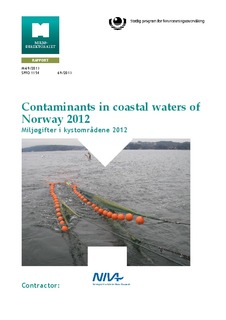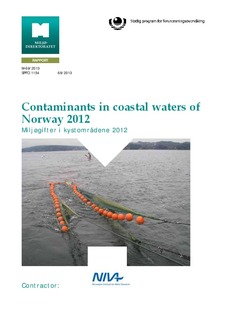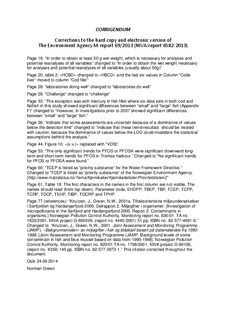| dc.contributor.author | Green, Norman Whitaker | |
| dc.contributor.author | Schøyen, Merete | |
| dc.contributor.author | Øxnevad, Sigurd | |
| dc.contributor.author | Ruus, Anders | |
| dc.contributor.author | Allan, Ian | |
| dc.contributor.author | Høgåsen, Tore | |
| dc.contributor.author | Beylich, Bjørnar | |
| dc.contributor.author | Håvardstun, Jarle | |
| dc.contributor.author | Rogne, Åse K. Gudmundson | |
| dc.contributor.author | Tveiten, Lise Ann | |
| dc.contributor.other | Green, Norman Whitaker - Project manager | |
| dc.date.accessioned | 2014-07-28T07:45:23Z | |
| dc.date.accessioned | 2014-07-30T07:34:37Z | |
| dc.date.available | 2014-07-28T07:45:23Z | |
| dc.date.available | 2014-07-30T07:34:37Z | |
| dc.date.issued | 2013 | |
| dc.identifier | 6582 | |
| dc.identifier.isbn | 978-82-577-6317-6 | |
| dc.identifier.issn | 1894-7948 | |
| dc.identifier.uri | http://hdl.handle.net/11250/198936 | |
| dc.description | En Corrigendum ble tilføyd til rapporten den 24.09.2014. Den er også lagt inn som vedlegg i selve rapportsfil. | |
| dc.description | A Corrigendum was added to the report on 09/24/2014. It is also added as an attachment in the report's file. | |
| dc.description.abstract | This programme examines long term changes for legacy and some emerging contaminants in biota along the coast of Norway from the Oslofjord and Hvaler region in the southeast to the Varangerfjord in the northeast, in both polluted areas and areas remote from point sources. The 2012-investigation included the monitoring of blue mussel (23 stations), dog whelk (8 stations), common periwinkle (1 station) cod (14 stations) and seawater (passive samplers, 3 stations). Thirty contaminants were chosen for this report as reasonable representation of the chemicals investigated. This selection has 272 time series of which there were statistically significant trends in 50 cases: 34 (12.5 %) were downwards and 16 (5.9 %) upwards. The dominance of downward trends indicates that contamination is decreasing. Of the 272 cases, 156 could be classified by the environmental classification system used by the Norwegian Environment Agency, 81.4 % were classified as insignificantly polluted, 13.5 % as moderately polluted, 4.5 % as markedly polluted, 0 % as severely polluted and 0.6 % as extremely polluted. Analyses of HBCD, SCCP, MCCP, PFRs, BPA, and TBBPA and the use of passive samplers were included in this programme for the first time. Some cases warrant special concern. These were for example upward trend for mercury in cod fillet from the inner Oslofjord, high concentrations of hexabromocyclododecane (a-HBCD) in cod liver from the same area, and high concentrations of medium chain chlorinated paraffins (MCCP) in cod liver from Sørfjord | nb_NO |
| dc.description.sponsorship | Miljødirektoratet | |
| dc.language.iso | eng | nb_NO |
| dc.publisher | | nb_NO |
| dc.relation.ispartofseries | NIVA-rapport;6582 | |
| dc.relation.ispartofseries | Miljødirektoratet-rapport;M-69/2013 | |
| dc.title | Contaminants in coastal waters of Norway 2012 | nb_NO |
| dc.title.alternative | Miljøgifter i kystområdene 2012 | nb_NO |
| dc.type | Research report | nb_NO |
| dc.date.updated | 2014-07-28T07:45:24Z | |
| dc.rights.holder | | |
| dc.subject.nsi | VDP::Matematikk og naturvitenskap: 400 | |
| dc.subject.nsi | VDP::Mathematics and natural scienses: 400 | |
| dc.source.pagenumber | 130 | nb_NO |
| dc.identifier.cristin | 1144440 | |
| dc.subject.keyword | Biologiske effekter / Biological effects | |
| dc.subject.keyword | Marin / Marine | |
| dc.subject.keyword | Miljøgifter / Environmental pollution | |
| dc.subject.keyword | Norge / Norway | |
| dc.relation.project | 13330 | |


